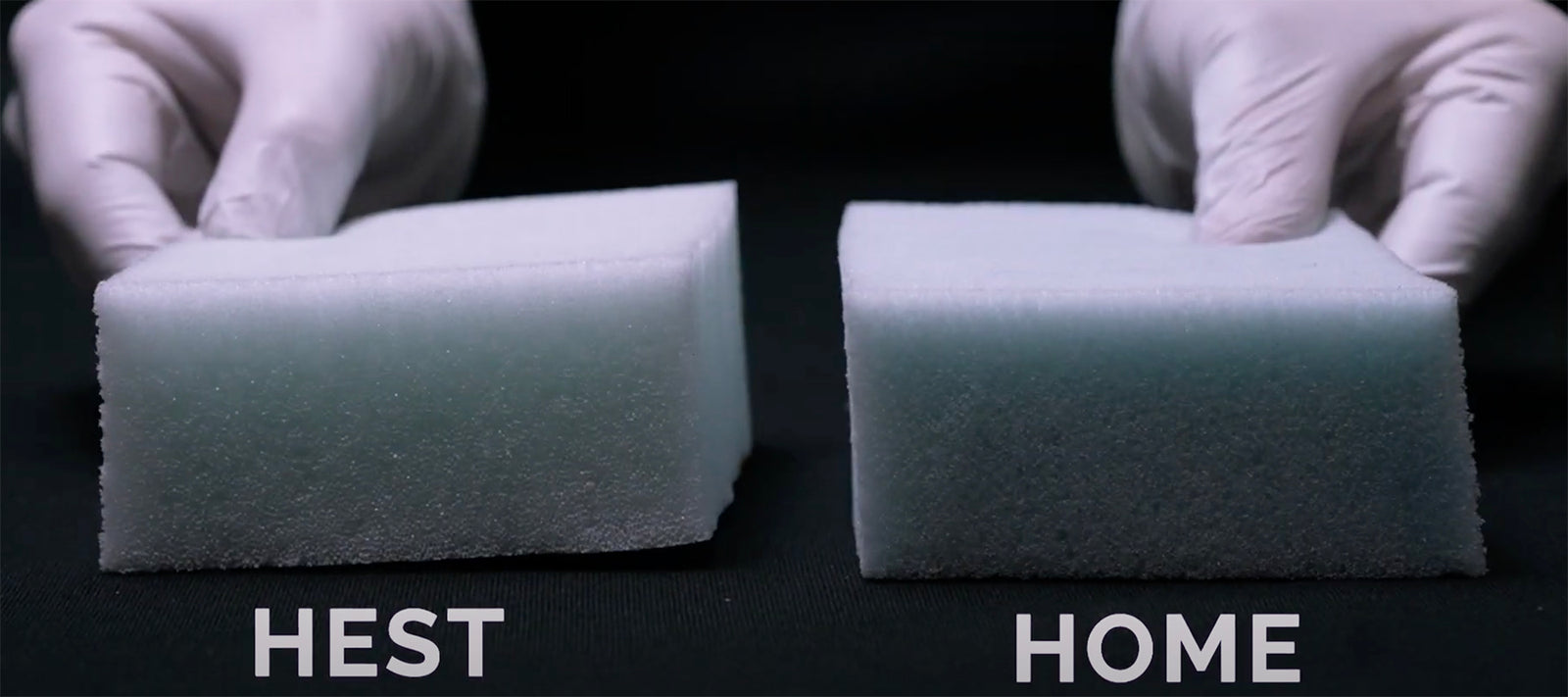Your Cart is Empty
December 21, 2021 2 min read
Did you know that memory foam found in the home environment becomes rock solid when exposed to temperatures below +40 degrees fahrenheit?
It’s because Memory Foam for home beds are designed for the ideal home environment temperature range, which most commonly doesn’t reach below +60 degrees fahrenheit.
Unfortunately, a lot of people try to cut their home memory foam mattresses and put them in their car camping, van, camper or RV setup to use as a sleeping pad in the outdoors. Only to be extremely disappointed to come back to camp at night, in the cold, to find that their mattress is rock hard and uncomfortable to sleep on.
The enhanced memory foam found in all HEST camping mattresses are temperature resilient meaning they perform in all temperatures, retaining shape, comfort and viscoelastic performance in temperatures below +40 degrees fahrenheit. Better alternative to the memory foam sleeping pad you currently use in your RV or camper.
HEST vs. HOME Memory Foam in Cold Temperatures Found While Winter Camping
At the HESTquarters ( aka the HEST HQ) we did a fun little science experiment to showcase the HEST enhanced memory foam’s performance in cold temperatures when compared to HOME Memory Foam:
1) We took the same-sized sample of HEST Memory Foam and Home Mattress Memory Foam and stuck them both in the freezer for twenty minutes at freezing temperatures ( below 32 degrees fahrenheit)
2) Pulled both foams and struck a hammer down on both of them.
What we found:
1) Home Memory Foam was ROCK SOLID- imagine putting your head or body down to sleep on that for the night? Might as well sleep on the ground!
2) HEST Enhanced Memory Foam retained its shape, comfort and viscoelastic performance.
The HEST enhanced memory foam has billions of microscopic air cells which are smaller than traditional home foam, which means it traps more air (and also requires more force to release the air... why we recommend SLOWLY rolling your HEST pad to allow the air to escape the billions of foam cells). These mechanical qualities create the viscoelastic performance similar to traditional memory foam but at any temperature.

